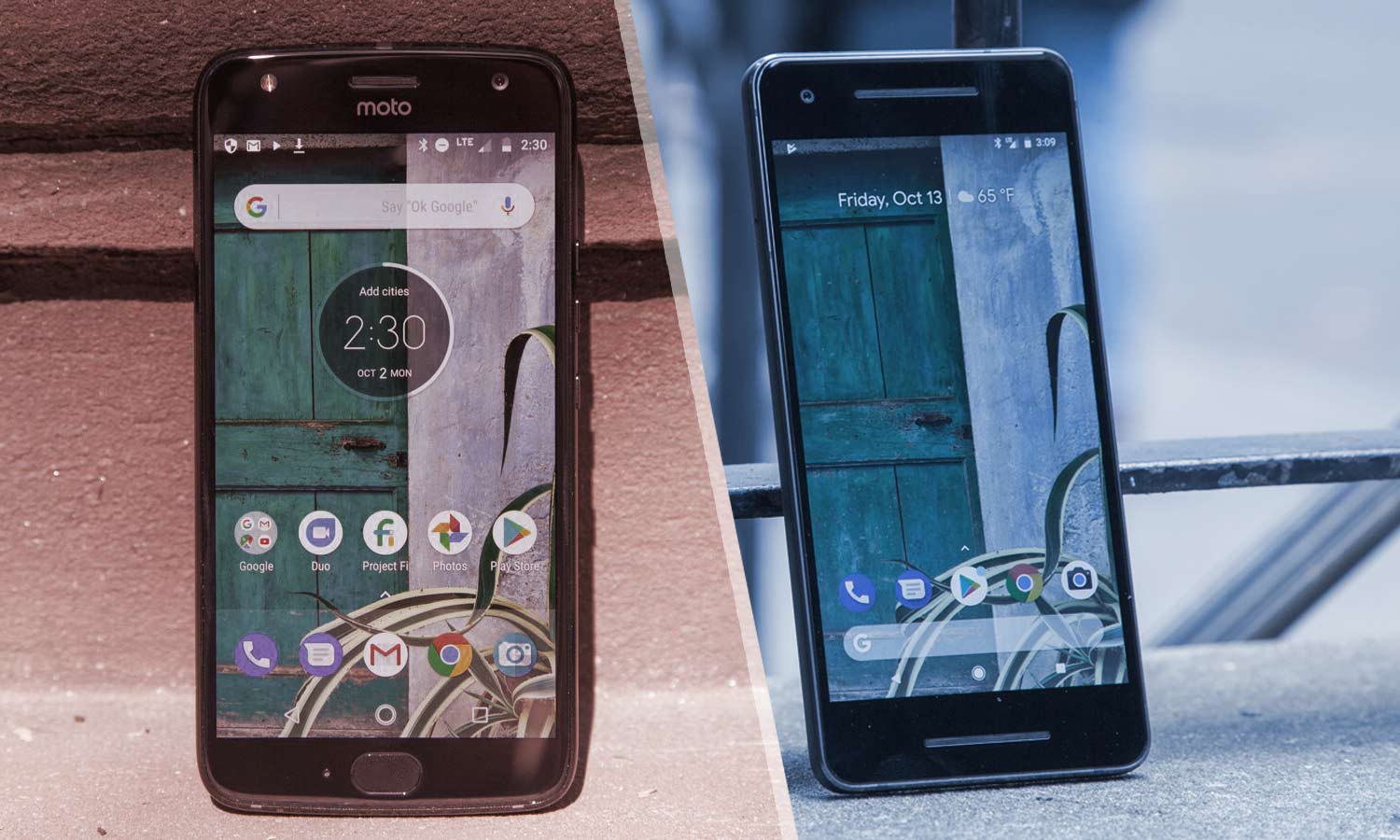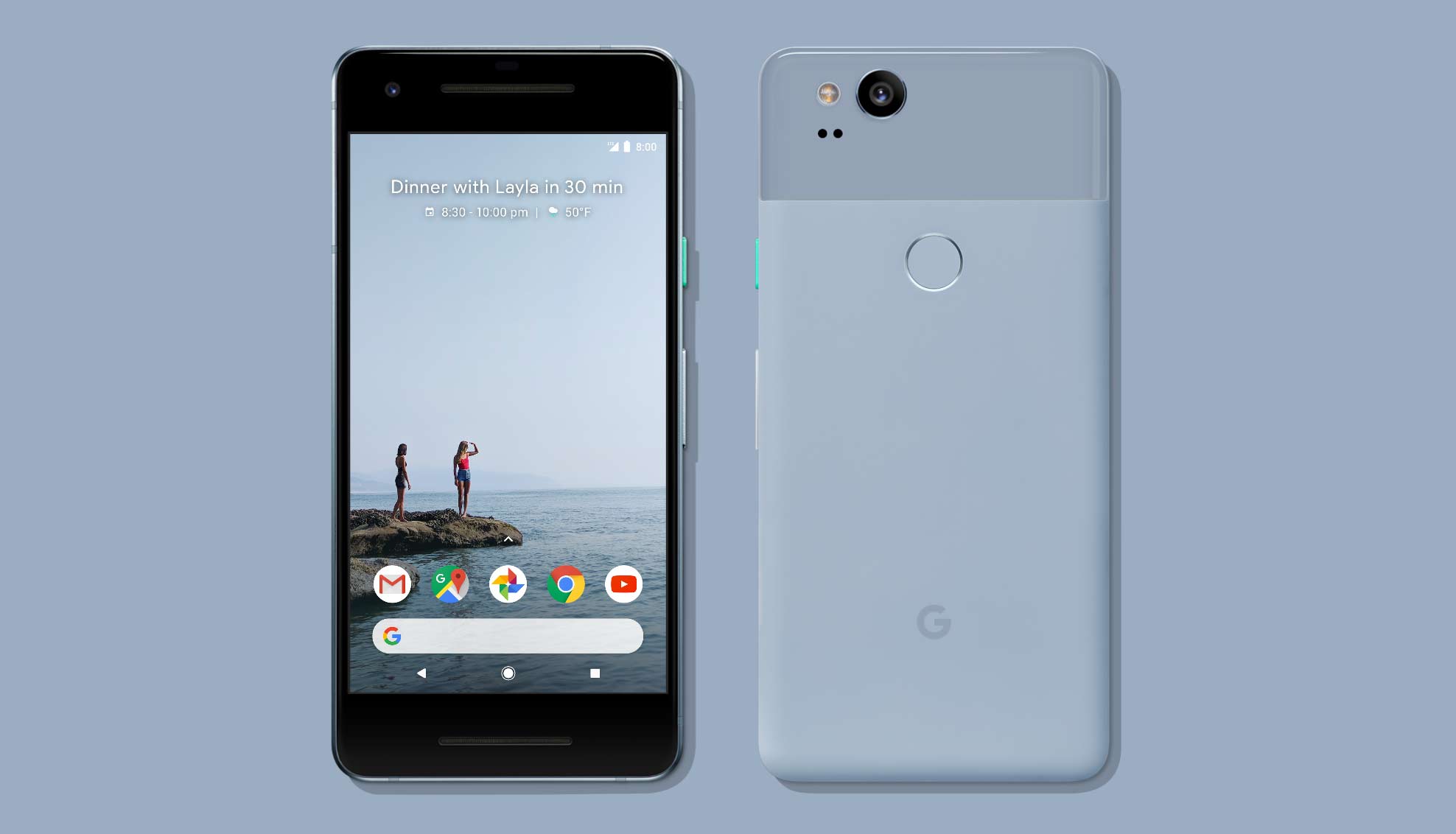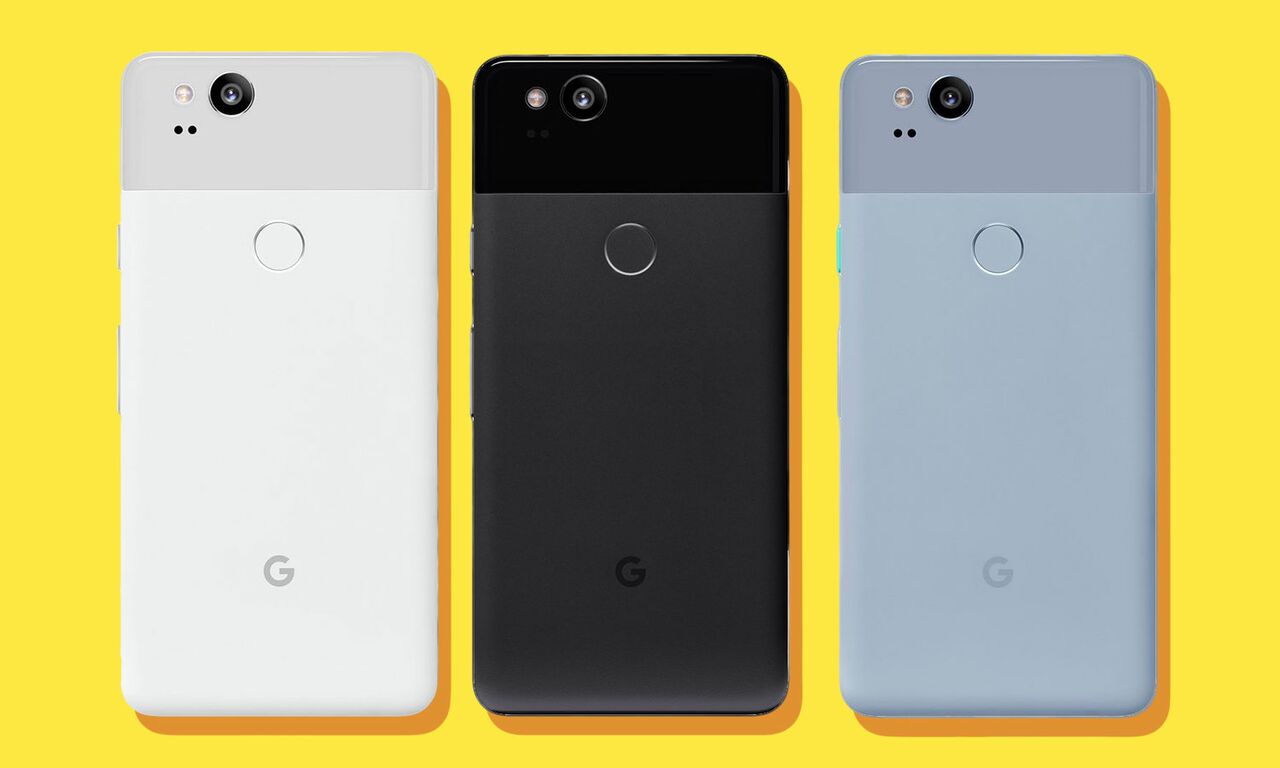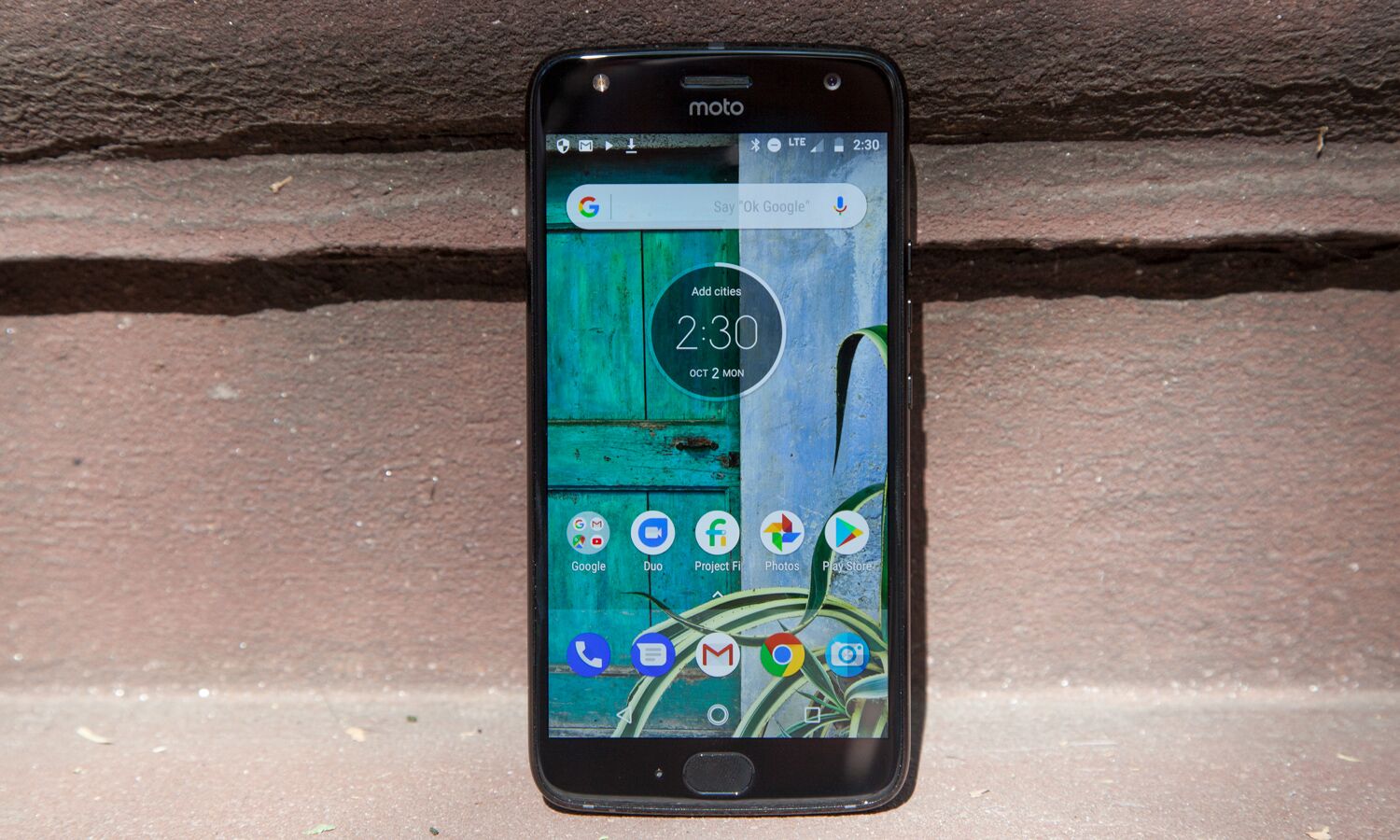Project Fi Showdown: Splurge on the Pixel 2 or Save on the Moto X4?
With the introduction of the Moto X4 Android One, it's now cheaper than ever to buy into Google's Project Fi network. But how much would you give up with this phone compared to the Pixel 2?
You wouldn't usually think to compare Google's new Pixel 2 to the Moto X4 Android One. The first phone's a flagship device from Google that promises to deliver a clean Android experience; the other is a midrange Motorola model that costs $250 less and lacks the Pixel's high-end hardware and features.

But there's a good reason to stack up these very different phones side by side: They both support Google's Project Fi wireless network. With last year's Pixel now in short supply, if you want to use Google's wireless service, these two phones are likely your choices.
So, should you opt for the full Google experience with the $649 Pixel 2 or try to save a few bucks with the $399 Moto X4? To help you decide, here's a guide explaining what exactly you're missing out on by opting for the less expensive handset. Fortunately, the X4 compares quite favorably to the Pixel 2, offering a lot of value and most of the same functionality, with a couple of gaps here and there.
- The Pixel 2's OLED screen is sharper and more colorful.
- The Pixel 2's more-powerful processor performs better overall.
- The Pixel 2's camera has better dynamic range and low-light performance.
- The Moto X4's bigger battery lasts a bit longer on a charge.
- Both phones are water-resistant, though only the Moto X4 features a headphone jack.
Design
Admittedly, neither of these phones is exactly a looker; both sport chunky bezels and rather traditional designs.

The Pixel 2 wins for its mostly metal construction, with a powdered finish to its aluminum chassis that provides a more premium feel than the X4's glass. However, the X4 has its fingerprint sensor on the front rather than the back, which some users may prefer. Motorola's phone also features a headphone jack, whereas the Pixel 2 relies exclusively on USB-C.

Both phones are water-resistant, but the X4 fares slightly better, with a maximum depth of 5 feet versus 3.3 feet on the Pixel 2, for a limit of 30 minutes.
Display
The two devices' screens are quite different. The Pixel 2 uses a 5-inch, 1080p Samsung-sourced AMOLED panel. It's not the same as the plastic OLED screen in the Pixel 2 XL, which has been exhibiting a variety of issues since launch, from burn-in to bad viewing angles.
Get instant access to breaking news, the hottest reviews, great deals and helpful tips.
The Pixel 2's display still isn't quite as vivid as what you'll find in the Galaxy S8, but it appears this was a deliberate choice on Google's part, to go for a more realistic color range than most other phone makers offer.
The X4, conversely, makes do with a 5.2-inch LCD panel at the same, full-HD resolution. It's great as far as LCD screens go, but you get what you pay for.

The X4's screen simply can't compare to the inky blacks and saturated hues of the Pixel 2, nor does it offer the always-on clock and notifications that OLED phones typically feature. The one benefit the X4 has going for it is that it gets much brighter: 513 nits versus the Pixel 2's 346.
Camera
The X4 may have double the rear cameras of the Pixel 2, but in this instance, the numbers are misleading. Motorola's handset combines a 12-megapixel sensor with an 8-MP wide-angle lens, but Google's offering, with its single, 12-MP shooter, is consistently the better camera in most situations.
Colors simply pop in the Pixel 2's shot, with better white balance, proper contrast that doesn't blow out highlights and shadows, and improved low-light performance thanks in part to the wider, f/1.8 aperture.
MORE: Best Smartphone Cameras
The Pixel 2's output is sharper and simultaneously less grainy. It's also much quicker to capture photos. Pressing the shutter button with HDR mode activated on the X4 produced an unavoidable 1- to 2-second delay every time — something that never affected our Pixel 2 unit.
Additionally, both phones are capable of portrait-style depth of field. The X4 impressively allows you to adjust the strength of the effect on the fly, but its results simply aren't as convincing. The final product resembles a mediocre Photoshop job compared to the clean, realistic exposure you get from the Pixel 2.
Battery Life
If you want a phone that lasts through the day on a charge, you won't be disappointed with either of these devices. While the Pixel 2 sports a slightly smaller battery than the X4 — 2,700 mAh compared to 3,000 mAh — it posted nearly as excellent battery life in our Tom's Guide Battery Test, which involves continuous web surfing over LTE.

Google's phone delivered 11 hours and 7 minutes of continuous LTE web surfing on Verizon's network, while the X4 managed 11 hours and 41 minutes on Project Fi. There are sometimes discrepancies in longevity between networks, but overall, both phones are within the same ballpark.
MORE: Smartphones with the Longest Battery Life
Unfortunately, neither phone boasts wireless charging, though both come with fast-charging adapters that deliver 6 hours of power in 15 minutes.
Performance
The X4's Qualcomm Snapdragon 630 processor is no slouch, but it pales in comparison to the Snapdragon 835 that powers the Pixel 2. Google's phone also benefits from an extra gigabyte of RAM, for a total of 4GB instead of 3GB.
Turning to Geekbench, which tests overall performance, the Pixel 2 expectedly touts a sizable advantage over the X4, posting a score of 6,282 against 4,122. In real-world use, the Motorola performs quite well most of the time, but if you push your phone by frequently switching between apps and playing demanding games, the Pixel 2 is worth the extra cash.
MORE: Best Smartphones on the Market Now
The Pixel 2 offers more onboard storage — 64GB — than the 32GB you'll get with the X4. But Motorola's phone features a microSD slot that's MIA on the Pixel 2, so you can expand the X4's storage to 2TB.
Software
Both phones run stock Android, though the Pixel 2 gets the nod because it already has version 8.0 Oreo, the newest release of Google's OS. The X4 is still stuck on 7.1.1 Nougat, but because it's an Android One device, owners shouldn't need to wait very long for the update.
The X4 actually has a couple of Motorola-specific gestures housed in its Moto Actions app, like chop twice for flashlight and twist twice for camera. However, these are the only departures from vanilla Android you'll find. In terms of software, the X4 may as well be a Nexus or Pixel product. Another version of the X4 without the Android One branding includes Amazon's Alexa as an alternative to Google Assistant, though this version is not compatible with Project Fi.

Unfortunately, the X4, like pretty much all non-Google phones, will miss out on one of the Pixel 2's most exciting features at launch: Google Lens. This allows you to scan landmarks and objects using your phone's camera and pull up relevant information and actionable content. For example, focusing in on a router's name and password will lead to a prompt where you can immediately connect to that router's network, while aiming Lens at a restaurant will deliver reviews of that establishment. Google has said this feature will eventually arrive to all of the new Android phones down the line, but it remains a Pixel exclusive for now.
MORE: The Original Pixel Is Getting the Pixel 2's Best Feature
Finally, it must be mentioned that you'll receive an extra year of software updates from Google if you opt for the Pixel 2. Support for the X4, like with pretty much every other Android device, is likely to end after the phone's spent 24 months on the market.
Bottom Line
The Moto X4 Android One is almost like a Nexus phone for the modern era; it's a reasonably equipped and priced phone designed by a third-party Android manufacturer, running Google's unadulterated vision of the platform. It's a complete handset in its own right, and depending on your needs, it may suit you just fine.
But it does make clear compromises, namely with its camera, display and processor when you compare it to the Pixel 2. These are the areas where the Pixel 2 earns its $250 premium over Motorola's offering. If they're important to you, you shouldn't think twice about dropping the extra cash on Google's flagship. But if you're looking for the cheapest entry point to Project Fi, you can still expect a good overall experience with the Moto X4.
Credit: Tom's Guide
Adam Ismail is a staff writer at Jalopnik and previously worked on Tom's Guide covering smartphones, car tech and gaming. His love for all things mobile began with the original Motorola Droid; since then he’s owned a variety of Android and iOS-powered handsets, refusing to stay loyal to one platform. His work has also appeared on Digital Trends and GTPlanet. When he’s not fiddling with the latest devices, he’s at an indie pop show, recording a podcast or playing Sega Dreamcast.
-
mjlabe The Moto X4 has terrible (unusable) reception. It has problems with SD cards where it constantly skips songs. It also has trouble with most USB cables with Android Auto crashing constantly. I had to return it.Reply -
systemBuilder_49 I think you mixed up the photo viewer as the x4 side looks better and brighter all around.Reply -
nateoceanside Is it loaded with Google bloatware? My current phone is virtually unusable as every update contains larger and larger versions of Google's mandatory aps (that cannot be deleted). The few aps that I chose to install have all been crowded out. What's the point of having a large SD card when Google's bloatware is so poorly written that they can't use it?Reply -
hopkinsph Another difference: The Moto x4 supports the hardware manufacturer's integrated FM radio chip while the Pixel 2 does not. LG routinely clips the antenna leads from their phones, and the lack of a wired headset port in the Pixel 2 means antenna attenuation goes away regardless. Owners of Project Fi Nexus phones, also made by LG, have had to use data or wifi to stream radio stations even with wired headsets attached. This may seem like a no-big-deal issue for those on unlimited data plans offered by other wireless services, but Project Fi doesn't offer an unlimited data plan...you pay for what data you stream other than for wifi. Gee, thanks LG!Reply -
nateoceanside Is it loaded with Google bloatware? My current phone is virtually unusable as every update contains larger and larger versions of Google's mandatory aps (that cannot be deleted). The few aps that that I chose to install myself have all been crowded out. What's the point of having a large SD card when Google bloatware is so poorly written that they can't use it?Reply -
robertsfutch Don't forget the X4 is is IP68. Practically waterproof. The Pixel just doesn't have enough to justify the price tag. Especially if it forces me to buy new Bluetooth headphones or adapters.Reply -
stubarrett I have never understood how a slippery, metal case is considered "premium". The easier to hold composite cases are much easier to hold. If you get a phone with a metal case, you have to get a case (i.e. condom) so it will not slip out of hand or pocket.Reply -
spacecamel I think the "Amazon" version of the Moto X4 will work on Project Fi according to many people on Reddit and as listed on the Amazon sales page.Reply
